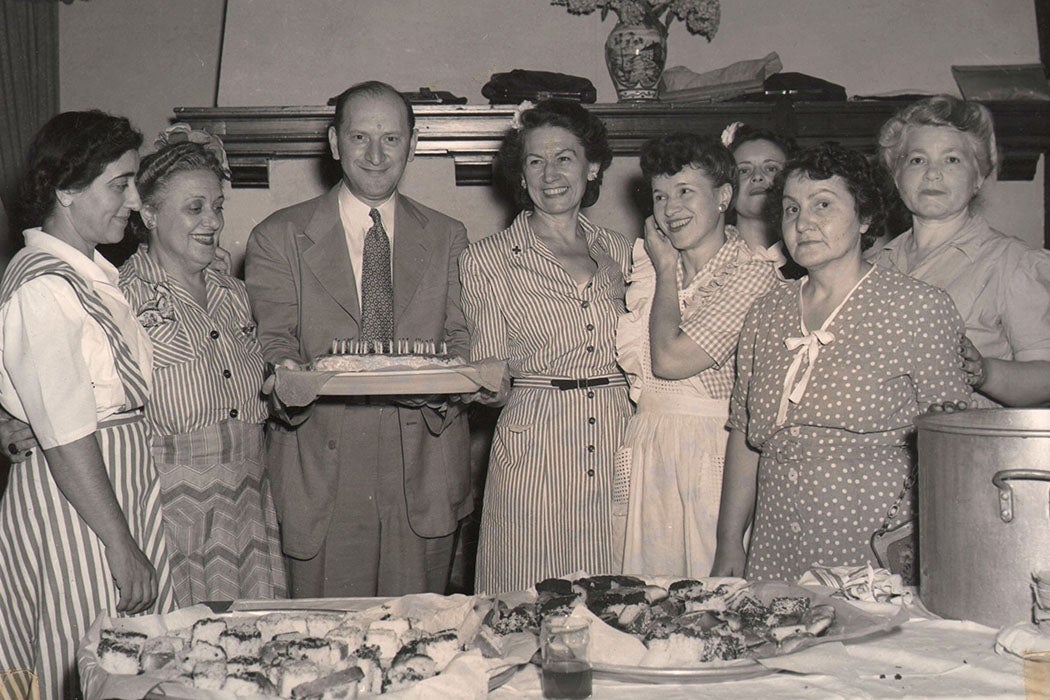Cookbooks can be a way to experiment with food, try new things, new flavors. But for American women, community cookbooks—multi-authored, communally compiled publications—have served a bigger purpose. They have been a way to create community, find voice, and as political scientist Kennan Ferguson writes, carve out a space that celebrates “women getting together, creating collectively, feeding and nurturing others, valuing women and women’s work.”
Community-created cookbooks were generally locally printed publications, and though, as Ferguson points out, many were put together by religious groups of women, they weren’t a means of proselytizing. Instead, they were used as fundraisers for either religious institutions or charities, and they have been a part of American culture since the Civil War era.
These books were also a way to link cultural identity and food. That process could be innocuous, like For the Love of Jewish Cooking (1963), from the women of Congregation Berith Kodesh, which “begins with eight pages explaining traditional prayers and holidays.” But as Ferguson explains, “many community cookbooks were dedicated to the institution of white supremacy,” like 1977’s Log Cabin Classic Recipes, from the United Daughters of the Confederacy, which included Jefferson Davis Pie and Stonewall Jackson Marble Cake, alongside “thirty pages of photos, lists of chapters and presidents, and images of Civil War battles.” Like the women who made them, community cookbooks represented multiple facets of American life.
Cookbooks also represented a class marker for many of the community groups that put them together. The Ladies of Capistrano Bay Yacht Club, for example, printed a cookbook that relied heavily on canned goods and other long-lasting items, since the focus of their book was “provisioning for a cruise.” Conversely, Depression-era community cookbooks focused on doing more with less, like mock apple pie and a mock fish recipe that used baked-then-fried grits as a substitute.
Women also used cookbooks to break free of stereotypes. Even as some groups, like the Lutheran Church Women’s 1975 cookbook, railed against “women’s lib,” as Ferguson points out, by producing and selling their cookbook, they performed “many of the behaviors that the nascent wave of American feminism advised all women to do: they collectively organized as women [and] discussed their experiences as women.” And by selling the books, they both gave themselves a voice in the community and created a viable economic model.
Weekly Newsletter
For Black women, community cookbooks also provided an opportunity to pass down their histories. The introduction to the National Council of Negro Women’s 1991 cookbook, for example, notes, “Through choosing this cookbook, you…are partaking in centuries of history, tradition, and culture.” The Mission Cook Book (1924), by a Los Angeles-based women’s church group, quietly referenced this legacy by including recipes from the “wives of the 25th US Infantry,” stationed in Nogales, Arizona. The regiment was also known as the Buffalo Soldiers, a famous all-Black unit. This addition, Ferguson writes, “served as both a source of racial pride and a statement of racial continuity.”
For all of these groups of women, cookbooks created a community. A community of writers, of cooks, of historians. They bound these women through religion, politics, race, and class, and as Ferguson writes, “All this they did in a world that men seemed to have little interest in participating in, or even understanding.”







